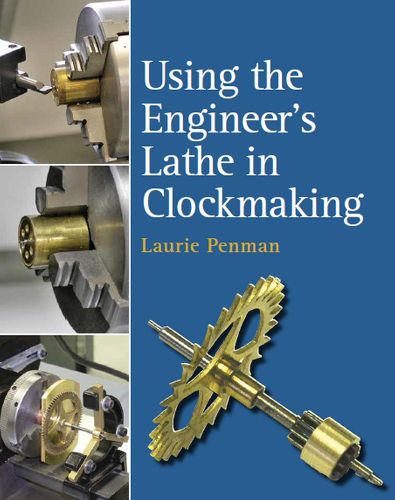Readings Newsletter
Become a Readings Member to make your shopping experience even easier.
Sign in or sign up for free!
You’re not far away from qualifying for FREE standard shipping within Australia
You’ve qualified for FREE standard shipping within Australia
The cart is loading…






This book is a practical guide to selecting, setting up and using an engineer’s lathe to create parts specifically for clockmaking or clock repairs. It begins as an instructional manual and consequently the first chapter assumes that the reader does not yet have a lathe and needs advice on choosing one. With over 160 diagrams and photographs, topics include: choosing and setting up the lathe; turning - materials and facing; boring and milling techniques; chucks, collets and face-plates; creating a height-centring gauge; pivots, wheels and pinions; removing and mounting gear wheels; fly cutters; making a flat depthing tool and, finally, creating centre marking tools. The intent is to provide a gentle learning curve for the practical use of the lathe.
AUTHOR: Laurie Penman was born into a family of engineers, architects and surgeons. His first attempt at turning was making of a knob for the shoe polish box using an engineer’s hand drill and an old file, when he was nine. After school he became a junior draughtsman, took an apprenticeship, and became a clockmaker. He has published many books on clockmaking and also taught the subject both the UK and the USA. 182 colour photographs
$9.00 standard shipping within Australia
FREE standard shipping within Australia for orders over $100.00
Express & International shipping calculated at checkout
This book is a practical guide to selecting, setting up and using an engineer’s lathe to create parts specifically for clockmaking or clock repairs. It begins as an instructional manual and consequently the first chapter assumes that the reader does not yet have a lathe and needs advice on choosing one. With over 160 diagrams and photographs, topics include: choosing and setting up the lathe; turning - materials and facing; boring and milling techniques; chucks, collets and face-plates; creating a height-centring gauge; pivots, wheels and pinions; removing and mounting gear wheels; fly cutters; making a flat depthing tool and, finally, creating centre marking tools. The intent is to provide a gentle learning curve for the practical use of the lathe.
AUTHOR: Laurie Penman was born into a family of engineers, architects and surgeons. His first attempt at turning was making of a knob for the shoe polish box using an engineer’s hand drill and an old file, when he was nine. After school he became a junior draughtsman, took an apprenticeship, and became a clockmaker. He has published many books on clockmaking and also taught the subject both the UK and the USA. 182 colour photographs